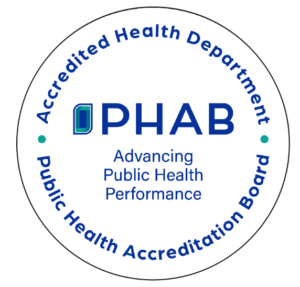The 2024 Beach Water Quality Surveillance Program
Lake County General Health District monitors the bacteria level in lake water at Headlands Beach State Park and Fairport Harbor Lakefront Park beaches daily between Memorial Day and Labor Day. Results are posted to the following sites:
Ohio NowCast website
Ohio BeachGuard website
The 2024 Beach Water Sampling Season has ended for this year.
2024 Beach Water Quality Program Sample Results
Headlands Beach State Park – Water Quality Prediction: N/A
Headlands Beach State Park Water Temperature*: –.-° F
Fairport Harbor Lakefront Park – Water Quality Prediction: N/A
Fairport Harbor Lakefront Park Water Temperature*: –.-° F
*Temperature taken during morning survey. Temperatures may change throughout the day with weather conditions.
Beach Sampling
Water Quality Sampling
What to look for

One of these signs are what you will see at Fairport and Mentor Headlands beaches each day. It is recommended that bathers avoid the water for 24-48 hours after a heavy rain ( ½ inch or more in a 24 hour period) due to increased likelihood of poor water quality.
The Sampling Process
Each day of monitoring, data and water samples are collected at both Fairport Harbor and Mentor Headlands beaches. The data includes information such as wave height, turbidity, rainfall, numbers of birds, wind speed, wind direction, and several other recorded variables that can potentially affect the water quality for swimming. A computer-based predictive model designed specifically for each beach is then used to determine the probability that E. coli bacteria will be greater than the EPA health standard of 235 E. coli per 100 milliliters of sample. If the predictive model indicates E. coli levels will be below the standard of 235 E. coli per 100 milliliters of sample, “GOOD” signage will be posted at the beach. “POOR” signage will be posted at the beach if the E. coli is predicted to be above the standard.
Additional water samples are also taken 3 times per week and analyzed for E. coli levels and compared to the predictive models’ results to evaluate the accuracy of the model. The predicted daily water quality and actual E. coli levels can both be found at the Ohio Nowcast and BeachGuard links that are listed above.
For more information, please contact:
Chris Loxterman
Environmental Health Supervisor
Phone: (440) 350-2551
Email: cloxterman@lcghd.org
Lake County Beaches
Lake County Beaches
Ohio Bathing Beach Hotline: 1 (866) 644-6224
Harmful Algae Blooms (HAB)
What is a HAB?
A Harmful Algae Bloom (HAB) is a large growth of naturally occurring bacteria fed by phosphorus and nitrogen nutrients in the water. Phosphorus and nitrogen come from agricultural runoff, sanitary sewer and combined sewer overflows, failing septic systems, and application of fertilizers.
What causes HAB?
Cyanobacteria, often called blue-green algae, are bacteria that are naturally found in Ohio’s lakes, ponds, and slow-moving streams. Although many species of algae do not produce toxins, some species of blue-green algae can cause HABs. Under the right water conditions, which usually occur in the warmer months, the number of these blue-green algae can dramatically increase, or “bloom.” Scientists do not fully understand what cause the same species of algae to trigger toxin production during one bloom and not produce toxin during the next. Some cyanobacterial blooms can look like foam, scum, or mats on the surface of fresh water lakes and ponds. The blooms can be blue, bright green, brown, or red and may look like paint floating on the water. Some blooms may not affect the appearance of the water.
Why is a HAB dangerous?
The bacteria that form the HAB can release toxins that may be harmful to people and pets:
- Boaters and jet skiers are cautioned that water spray contact on skin or breathing/inhaling water droplets may cause health problems.
- Toxins may cause a skin rash, blisters or hives.
- Ingestion of the toxins can cause vomiting, diarrhea, dizziness, tingling, numbness, sore throat, or headaches.
What does a HAB look like?

What should you do if you or your pets are exposed to waters where a HAB is found?
- Rinse off after coming out of the water.
- In case of accidental ingestion, contact a physician.
- In case of pet exposure, contact your vet.
- If you or your pet become ill, file a report with the state (links to forms provided below).
If the HAB is no longer visible, is it safe to swim?
Toxins can still be present in the water even if the HAB cannot be seen. Look for the signs on the beach that warn about the presence of a HAB.
For more information on HABs:
- The National Oceanic and Atmospheric Administration (NOAA) forecasts weekly HABs on Lake Erie
- Visit the Ohio EPA and Ohio Department of Health websites:


